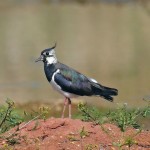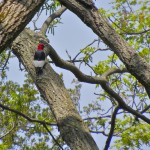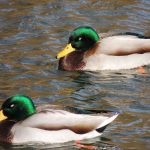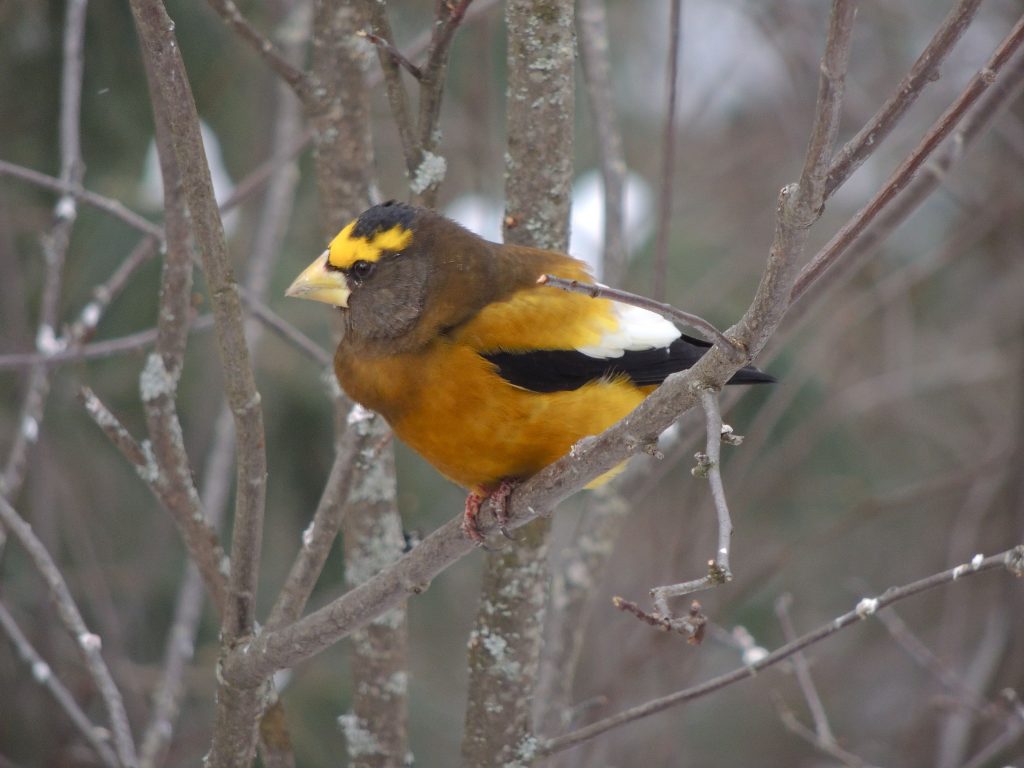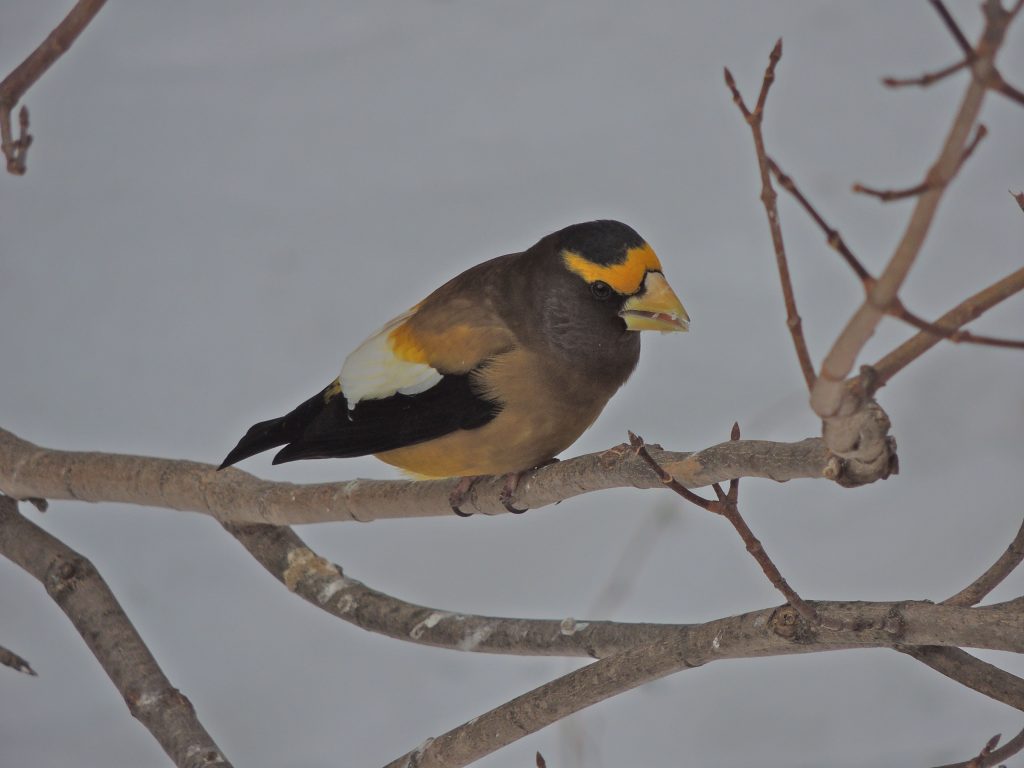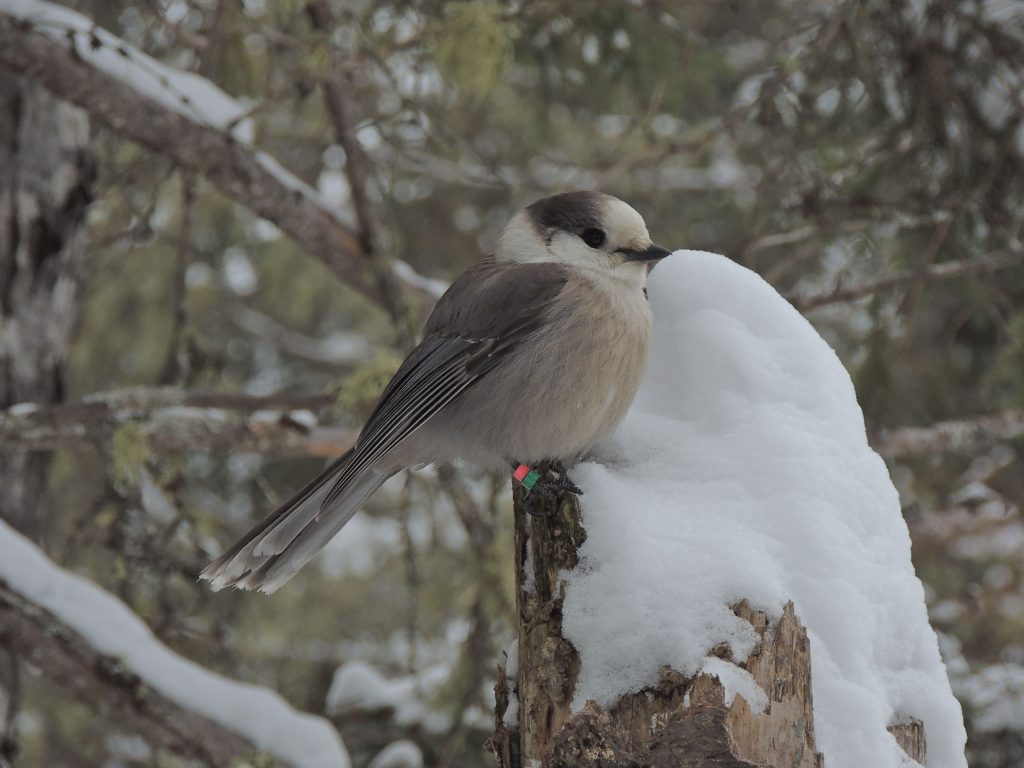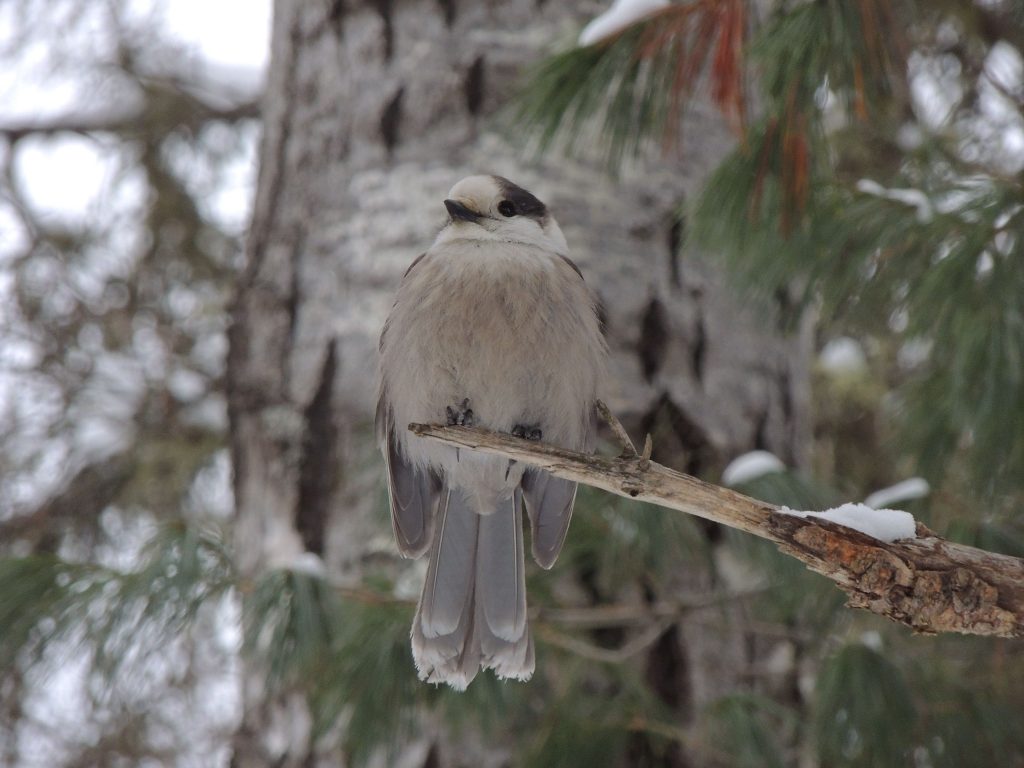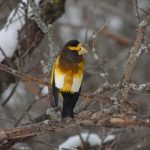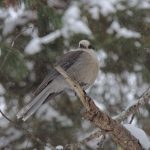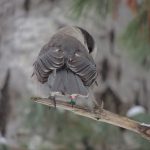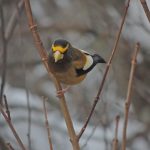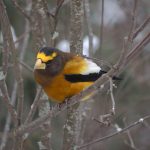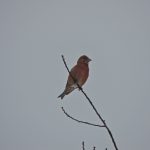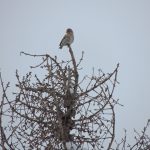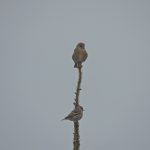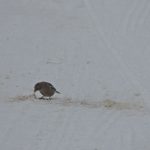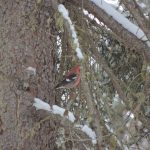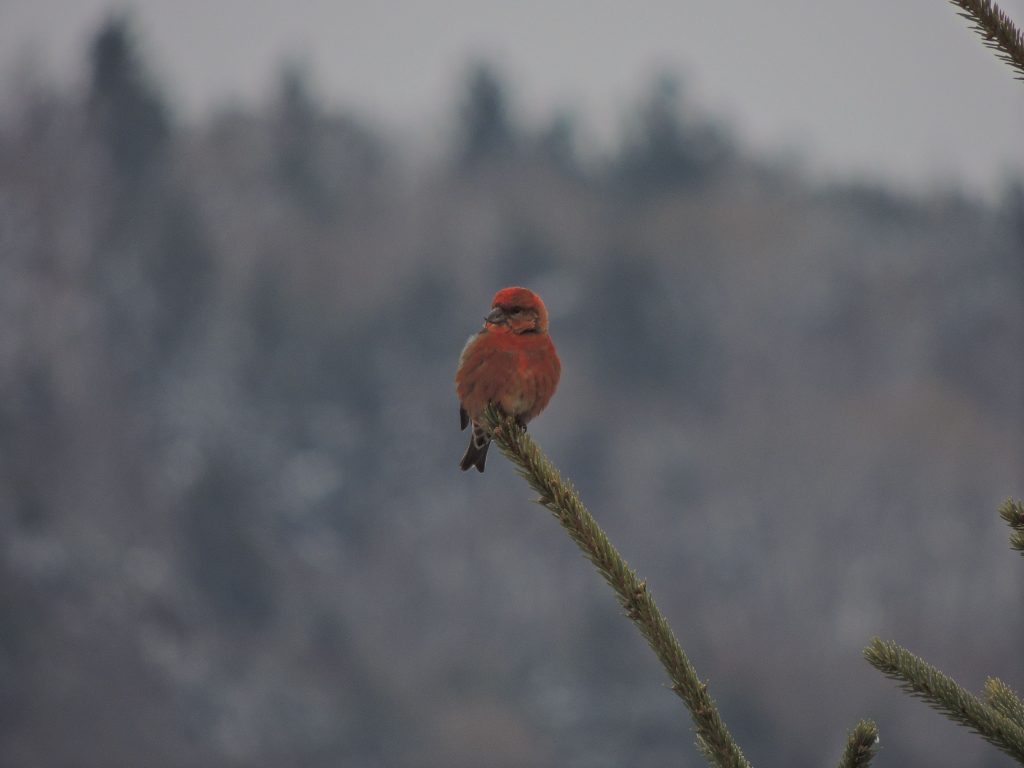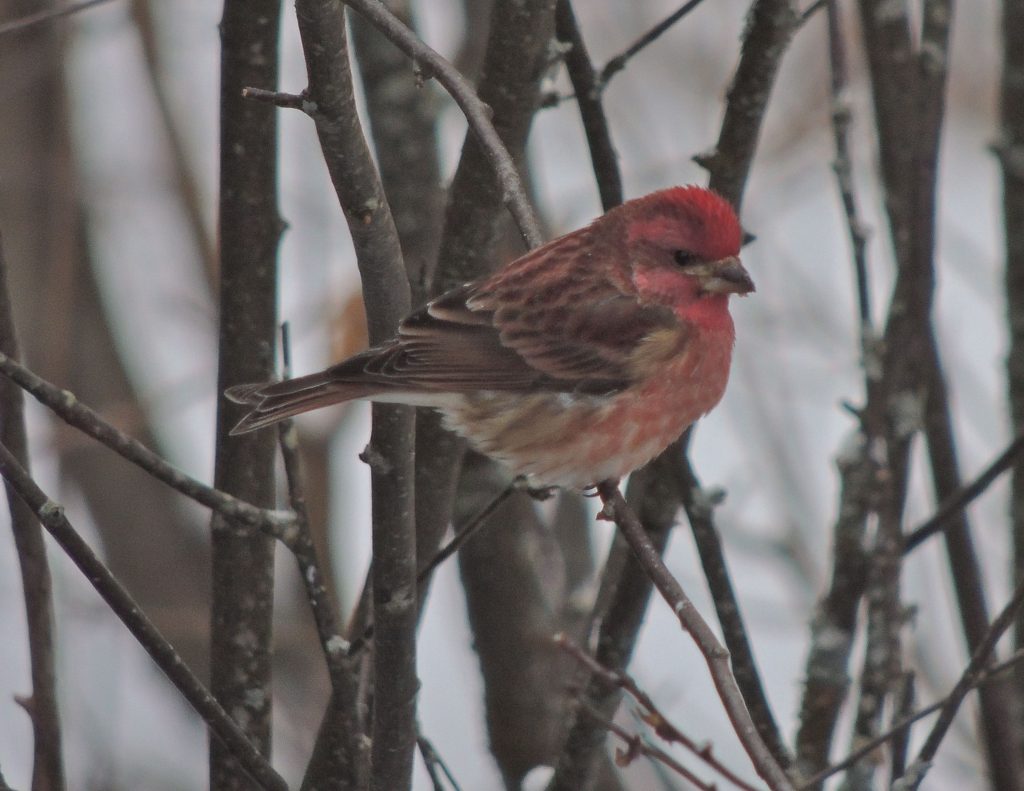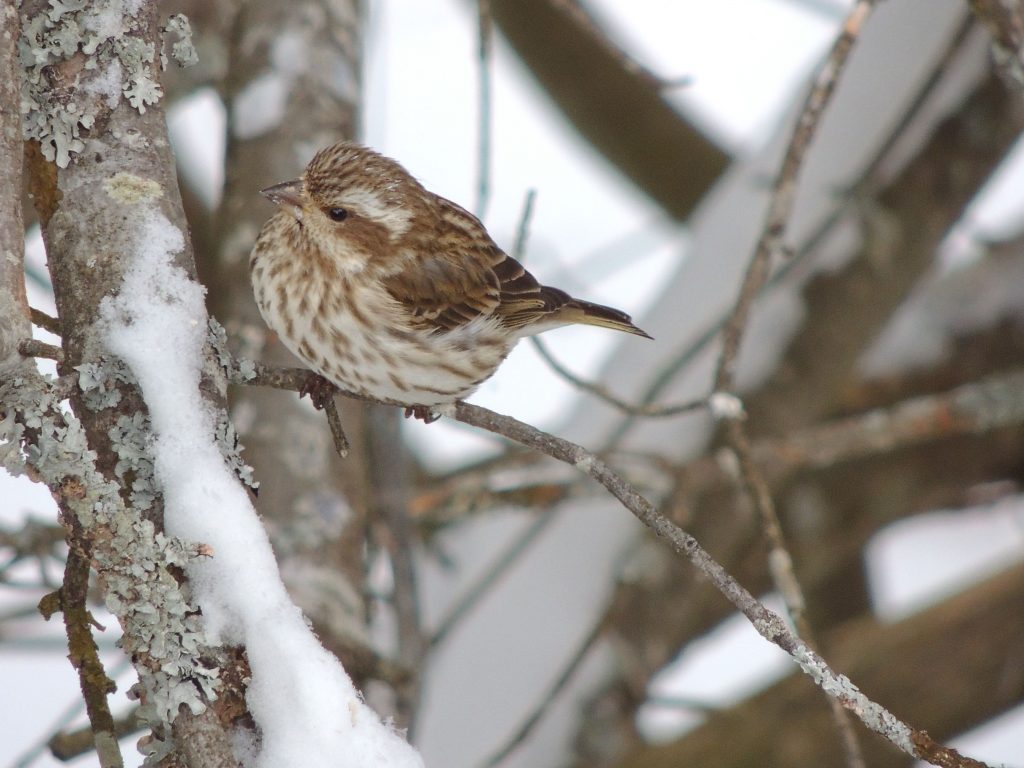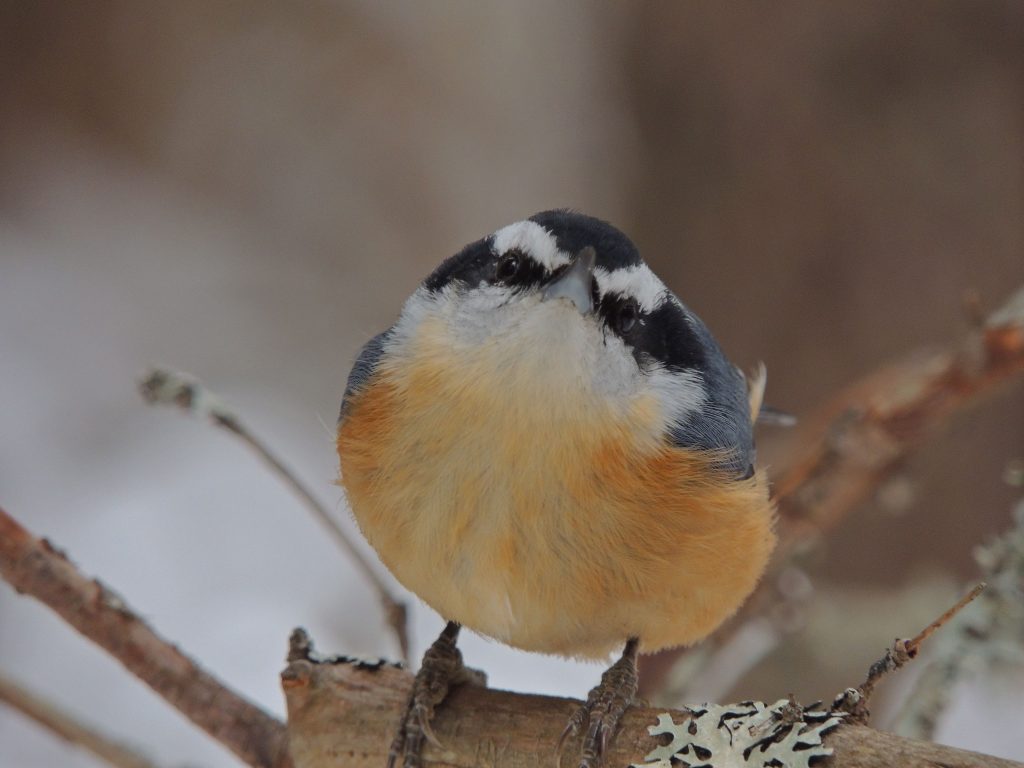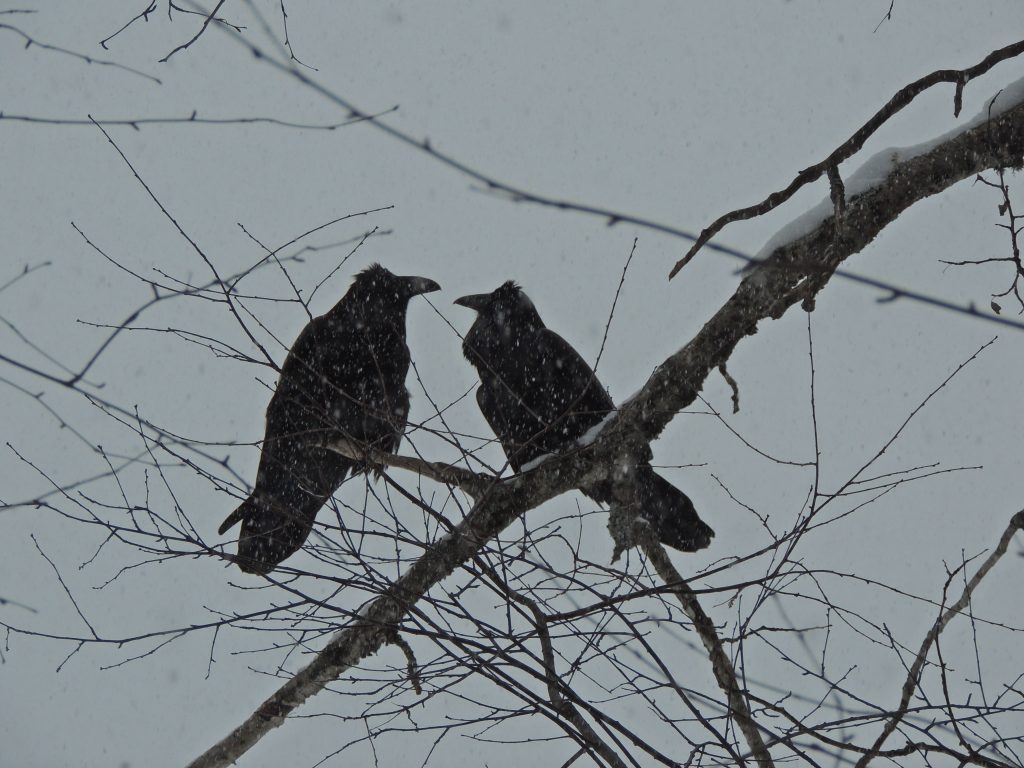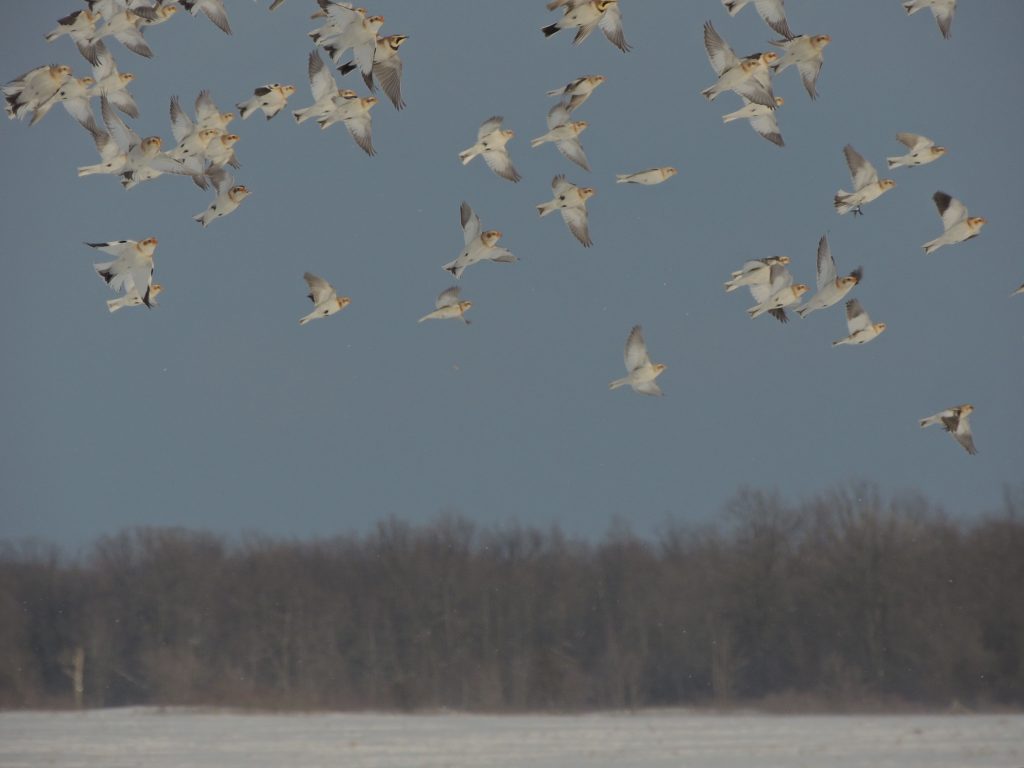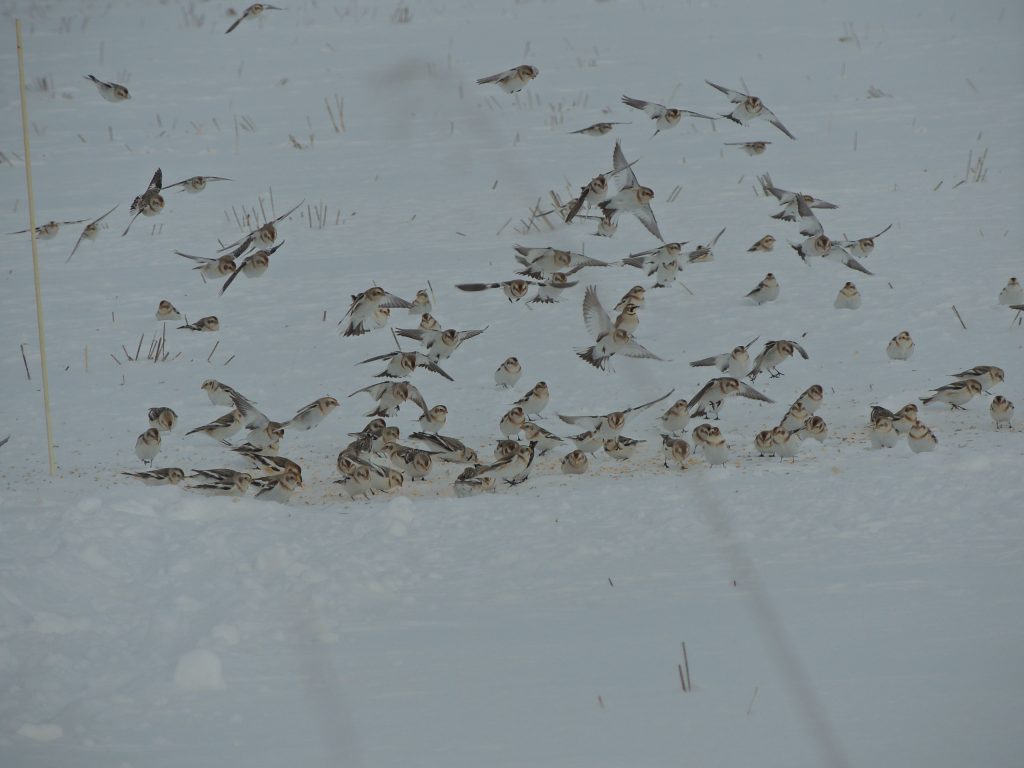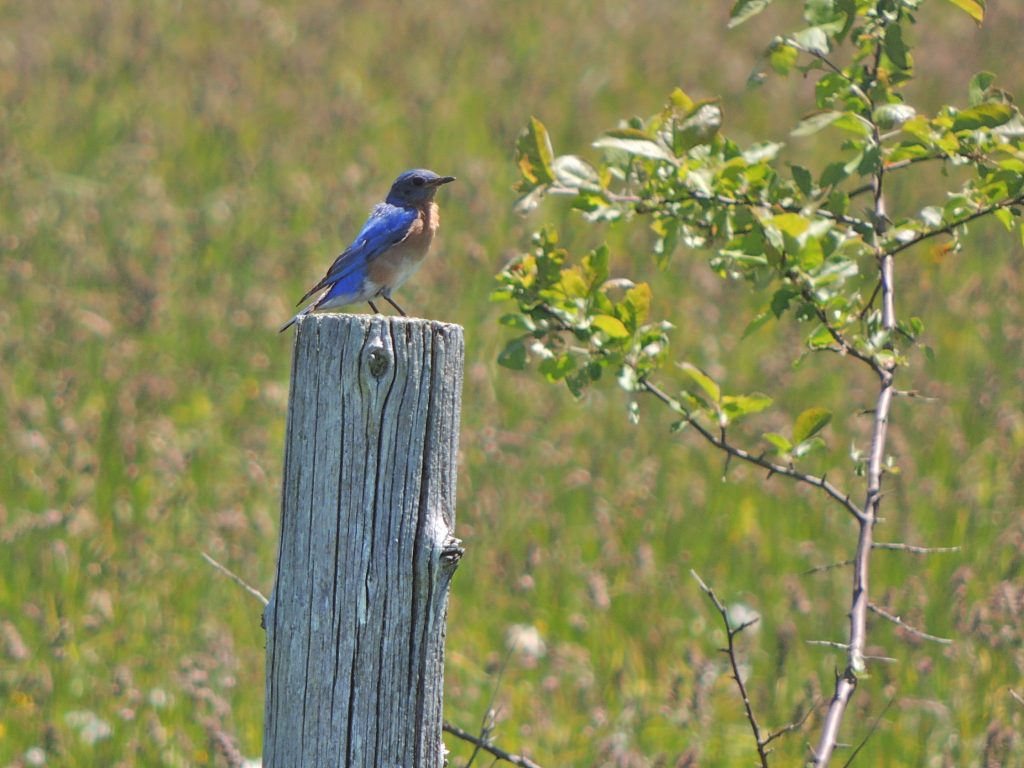February 22 2018. Saltfleet, ON. The way we keep seeing Snowy Owls around here is a bit of an embarrassment of riches. Yet that’s the way it is these days, I saw two today making it at least six this year. Whether they are close at hand or far off, snowies are always a wow! bird so, by the strict definition of this site, it should make them my Bird of the Day every time. But I think we’d all tire of a steady diet of Snowy Owls, there’s more to life.
Today’s second (the first one was a long way off) Snowy Owl rounded out nicely a cold morning that included several late winter novelties including a trio of Horned Larks and the first-of-the-year Red-winged Blackbirds. A recent surge of warmish air has cleared away our thick blanket of snow, streams and rivers are running fast and full with many low-lying areas now under water. An advance guard of ducks and geese anxious to secure the best breeding territories, has flown in. When winter comes storming back unless they are ready to retreat in a hurry I suppose they’ll take whatever cover they can find. In these flooded fields we found groups of Canada Goose, Mallard, Gadwall and a few American Wigeon.
We spotted a Northern Shrike on the top of a bare Red Ash tree and in the time it took to safely pull off the road and get my camera ready it flew to a nearby Hawthorn shrub from which it made a couple of forays to ground, probably in search of voles. I managed to get a couple of shots. Not the best but shrikes are few and far between and we were pleased with this one, Bird of the Day number one.
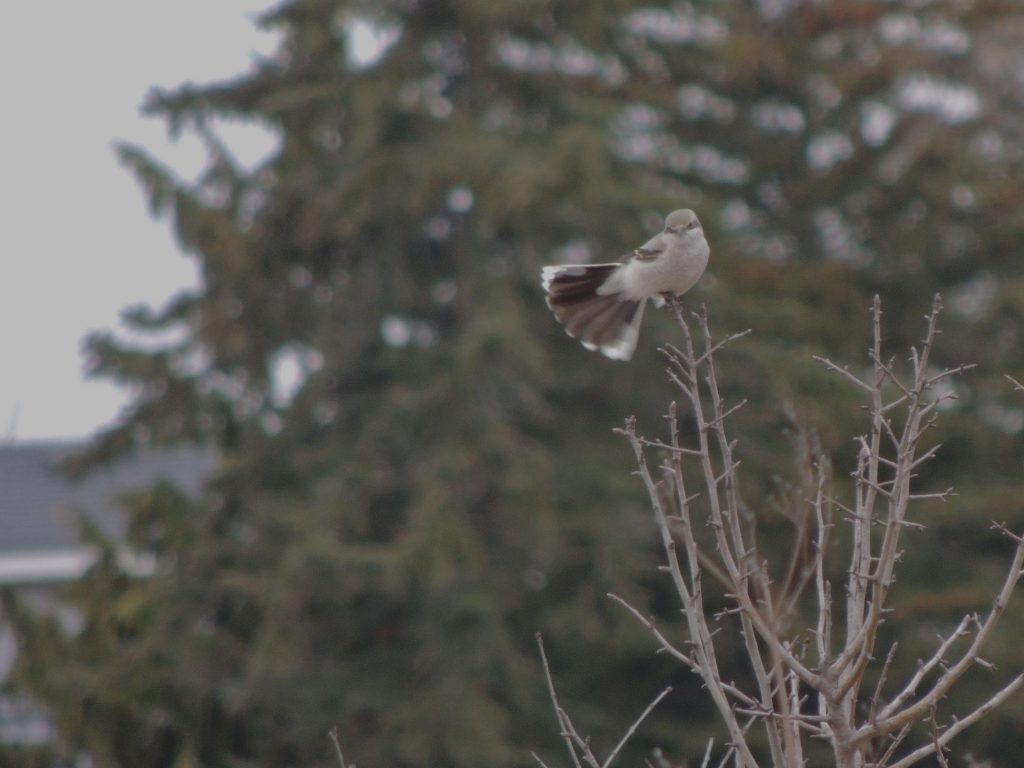
The Snowy Owl that rounded out this morning was almost pure white. First year males and females are heavily marked with dark brown barring and spotting. Second year birds are less marked in males, slightly less in females but it is unknown how long it takes for males to reach pure white adult plumage. We usually see strongly marked younger birds (like the one a month ago) but today’s was clearly an adult male, they’re sort of the prize find among snowies. Bird of the Day number two and only marginally marred by the muddy furrow it obviously found so comfortable; that’s just the way it goes.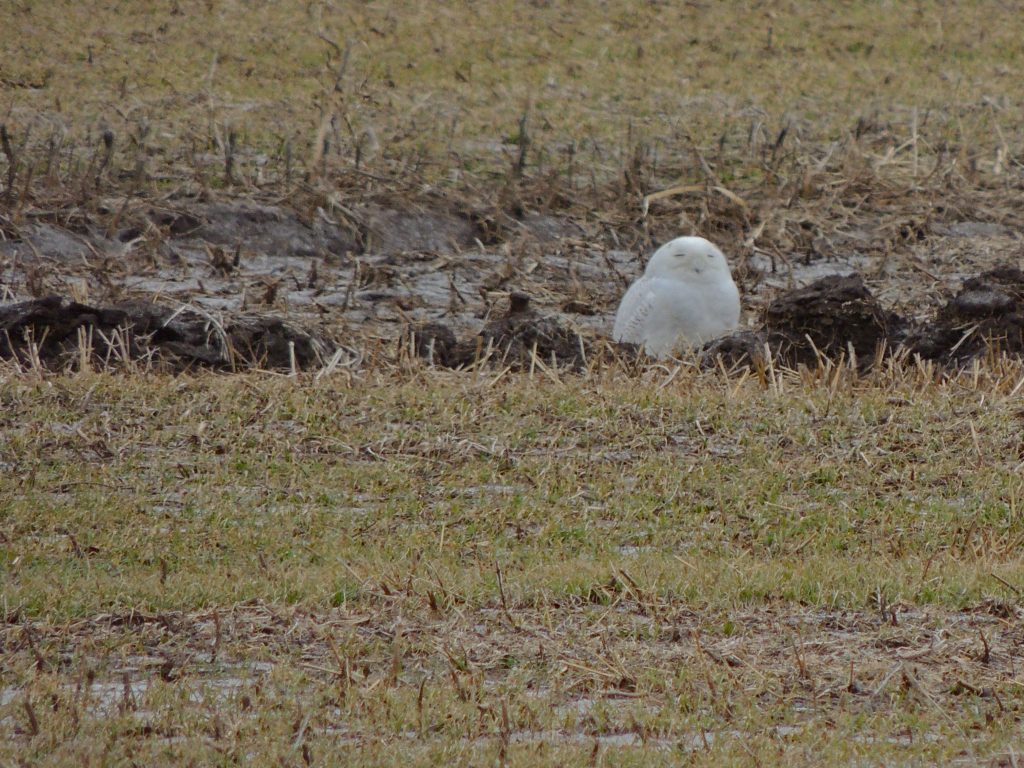
Footnote. I like words and wordplay, you’ve probably noticed. With so many hours spent bashing out stuff for this site it’s hardly surprising I suppose. Part of my fascination with wordplay lies in the scientific names that follow italicized behind the common names of our familiar birds. (And all other living organisms for that matter.) Some are tongue-twisters, some surely private jokes and many just mellifluous.
How about Lanius excubitor ?- the Northern Shrike, Lanius being Latin for butcher and excubitor a sentinel. Not only does it fit the bird’s way of life, but doesn’t it just roll off your tongue? And, Bubo scandiacus the Snowy Owl. I’m not keen on the bubo part, a word which in English means the swollen lymph node symptom of Black Death (caused incidentally by Yersinia pestis), but the scandiacus part I like – a nod to the northland.
Other bird name delights include Vanellus vanellus, Anas platyrynchos, Tyto Alba, Alauda arvensis and Melanerpes erythrocephalus. Here’s just some of them.
